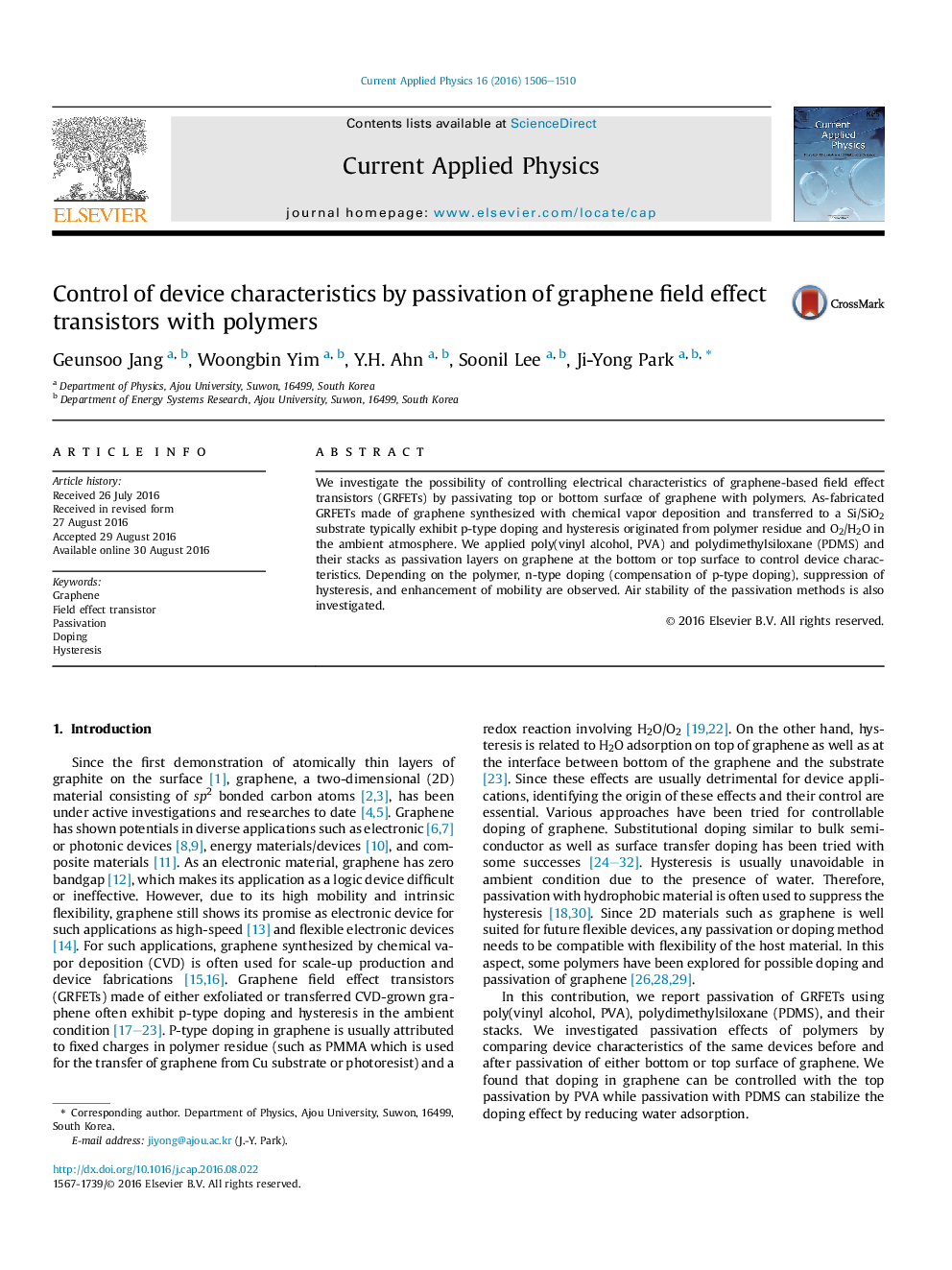| Article ID | Journal | Published Year | Pages | File Type |
|---|---|---|---|---|
| 6481620 | Current Applied Physics | 2016 | 5 Pages |
â¢The effects of polymer passivation on either side of graphene on the same device.â¢Bottom passivation helps to reduce the long-range charge scattering on SiO2 surface with improved mobility.â¢Top passivation by PVA is an effective way of n-doping graphene due to electron donation from hydroxyl groups in PVA.â¢Hydrophobic PDMS passivation can reduce hysteresis by preventing H2O adsorption on or near graphene.â¢Stacking of polymers with different functionalities is devised for optimizing passivation effects.
We investigate the possibility of controlling electrical characteristics of graphene-based field effect transistors (GRFETs) by passivating top or bottom surface of graphene with polymers. As-fabricated GRFETs made of graphene synthesized with chemical vapor deposition and transferred to a Si/SiO2 substrate typically exhibit p-type doping and hysteresis originated from polymer residue and O2/H2O in the ambient atmosphere. We applied poly(vinyl alcohol, PVA) and polydimethylsiloxane (PDMS) and their stacks as passivation layers on graphene at the bottom or top surface to control device characteristics. Depending on the polymer, n-type doping (compensation of p-type doping), suppression of hysteresis, and enhancement of mobility are observed. Air stability of the passivation methods is also investigated.
Graphical abstractDownload high-res image (147KB)Download full-size image
